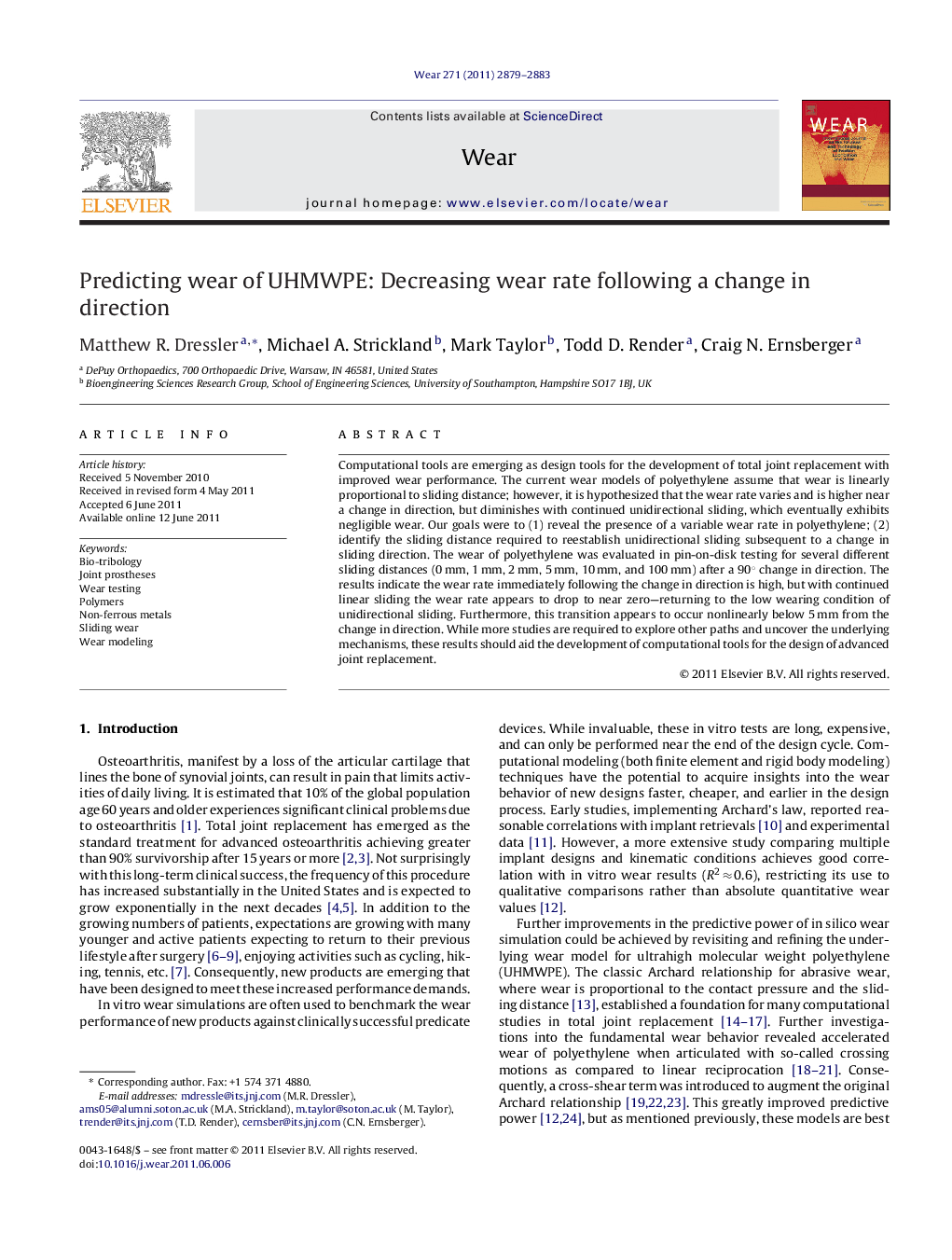| Article ID | Journal | Published Year | Pages | File Type |
|---|---|---|---|---|
| 617945 | Wear | 2011 | 5 Pages |
Computational tools are emerging as design tools for the development of total joint replacement with improved wear performance. The current wear models of polyethylene assume that wear is linearly proportional to sliding distance; however, it is hypothesized that the wear rate varies and is higher near a change in direction, but diminishes with continued unidirectional sliding, which eventually exhibits negligible wear. Our goals were to (1) reveal the presence of a variable wear rate in polyethylene; (2) identify the sliding distance required to reestablish unidirectional sliding subsequent to a change in sliding direction. The wear of polyethylene was evaluated in pin-on-disk testing for several different sliding distances (0 mm, 1 mm, 2 mm, 5 mm, 10 mm, and 100 mm) after a 90° change in direction. The results indicate the wear rate immediately following the change in direction is high, but with continued linear sliding the wear rate appears to drop to near zero—returning to the low wearing condition of unidirectional sliding. Furthermore, this transition appears to occur nonlinearly below 5 mm from the change in direction. While more studies are required to explore other paths and uncover the underlying mechanisms, these results should aid the development of computational tools for the design of advanced joint replacement.
Graphical abstractFigure optionsDownload full-size imageDownload high-quality image (80 K)Download as PowerPoint slideHighlights► The wear rate of polyethylene is high immediately following a change in direction. ► With continued linear sliding the wear rate drops to near zero. ► This transition is nonlinear and occurs less than 5 mm from the change in direction.
